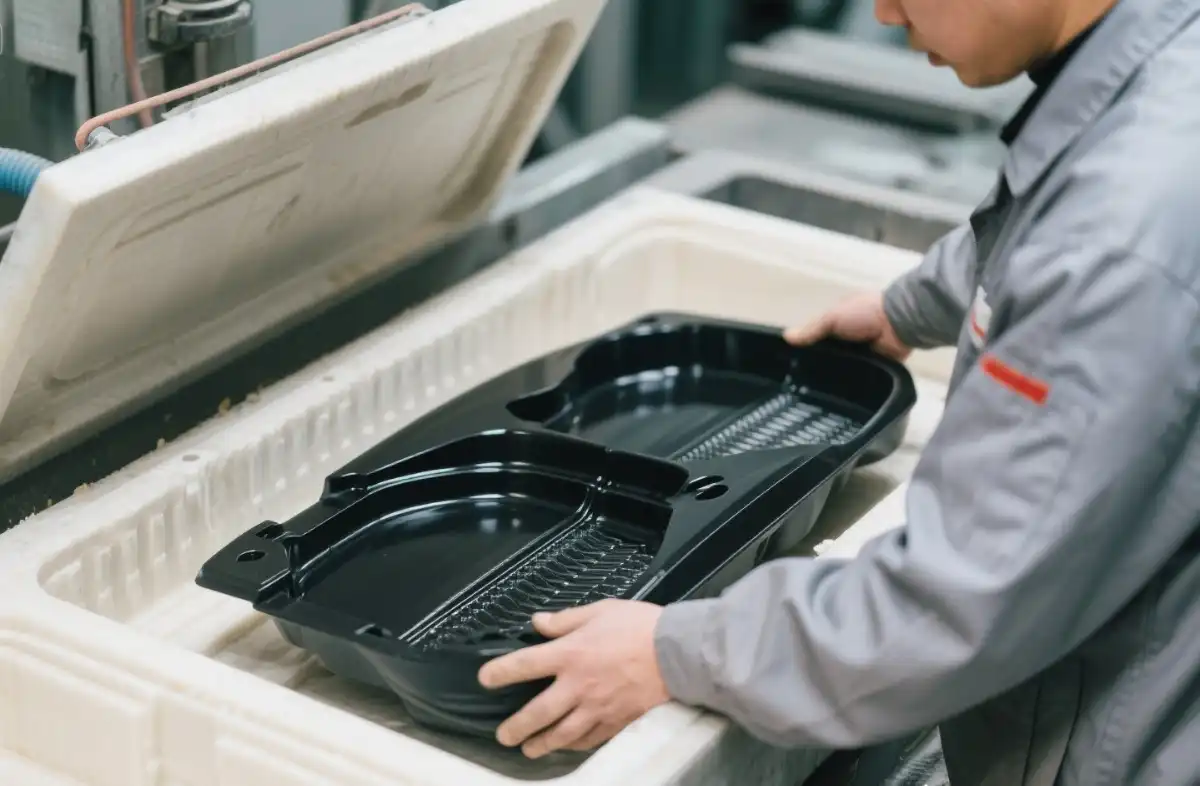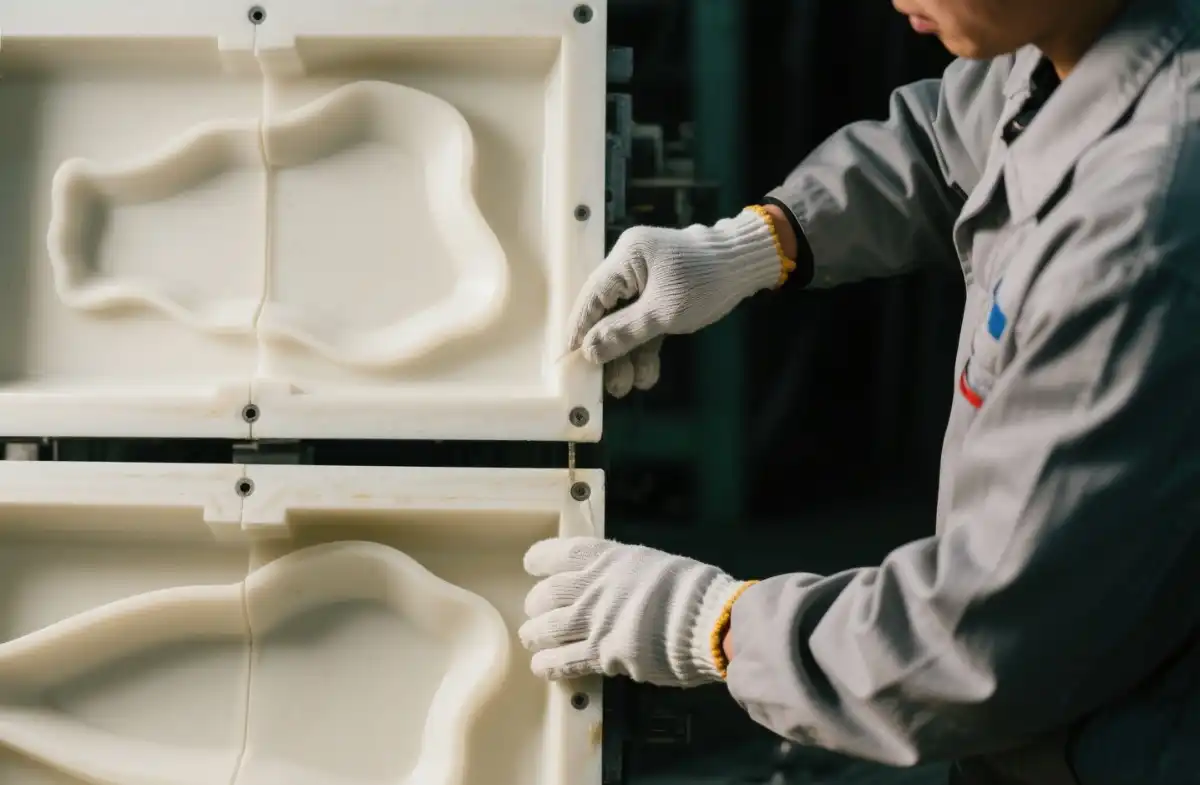Unparalleled Flexibility and Detail Reproduction
Capturing Intricate Geometries
Silicone casting excels at reproducing complex shapes and geometries with remarkable precision. The flexible nature of silicone allows it to conform to even the most intricate details of a master pattern, ensuring that every nuance is captured in the final mold. This capability is particularly valuable when working with designs that feature fine textures, sharp edges, or delicate undercuts. Unlike rigid molds, silicone molds can flex and deform during the demolding process, allowing for the extraction of parts with complex shapes without damaging the mold or the cast part.
Achieving High-Resolution Surface Finishes
One of the standout benefits of silicone casting is its ability to produce parts with exceptional surface quality. The liquid silicone used in the mold-making process can flow into the tiniest crevices and details of the master pattern, resulting in molds that can replicate surface textures with microscopic accuracy. This high-resolution capability is crucial for applications where aesthetics and surface finish are paramount, such as in the production of consumer electronics enclosures or automotive interior components.

Accommodating Undercuts and Complex Features
Traditional hard molds often struggle with undercuts and complex internal features, requiring complicated multi-part molds or sacrificial cores. Silicone casting, however, can handle these challenges with ease. The flexibility of silicone allows for the creation of single-piece molds that can accommodate undercuts and internal cavities. During demolding, the silicone can deform around these features and then spring back to its original shape, preserving the integrity of both the mold and the cast part. This simplifies the molding process and reduces the risk of defects associated with multi-part molds.
Cost-Effectiveness and Rapid Prototyping Capabilities
Economical Solution for Low-Volume Production
Silicone casting presents a cost-effective alternative for low to medium volume production runs. While the initial cost of creating a silicone mold may be higher than some traditional molding methods, the overall expense is often lower when considering the entire production cycle. Silicone molds can typically produce dozens to hundreds of parts before showing signs of wear, making them ideal for prototyping, bridge tooling, or small-scale production. This approach allows companies to avoid the high tooling costs associated with hard tooling methods like injection molding, especially when production volumes don't justify such investments.
Rapid Iteration and Design Refinement
The speed and flexibility of silicone casting make it an invaluable tool in the iterative design process. Designers and engineers can quickly create prototypes, test them, and make necessary adjustments without the delays and costs associated with modifying hard tooling. This rapid prototyping capability accelerates the product development cycle, allowing for multiple design iterations in a fraction of the time required by traditional methods. The ability to swiftly produce functional prototypes also facilitates early-stage testing and validation, potentially saving substantial time and resources in the long run.

Bridging the Gap Between Prototyping and Production
Silicone casting serves as an excellent bridge between initial prototyping and full-scale production. It allows companies to produce small batches of parts that closely resemble the final product in terms of material properties, aesthetics, and functionality. This capability is particularly valuable for market testing, gathering user feedback, or fulfilling small initial orders while permanent tooling is being developed. The flexibility of silicone casting also allows for easy modifications to the design during this phase, ensuring that the final product meets all requirements before committing to expensive hard tooling.
Material Versatility and Enhanced Product Development
Wide Range of Compatible Materials
One of the most significant advantages of silicone casting is its compatibility with a diverse array of materials. Depending on the specific silicone mold and casting resin chosen, manufacturers can produce parts in a wide range of plastics, including polyurethanes, epoxies, and various thermoplastics. This material flexibility allows for the creation of prototypes and small-run parts that closely match the properties of the intended final product. Whether the requirement is for rigid, flexible, transparent, or colored parts, silicone casting can accommodate these needs. This versatility is particularly valuable in industries like medical device manufacturing or aerospace, where specific material properties are often crucial to product performance.
Replication of Final Product Characteristics
Silicone casting enables the production of parts that closely mimic the characteristics of components made through production-scale processes. By carefully selecting the casting material, manufacturers can achieve parts with similar mechanical properties, thermal resistance, and chemical compatibility to those produced by injection molding or other high-volume techniques. This ability to replicate final product characteristics is invaluable for functional testing and validation. It allows designers and engineers to assess how a part will perform in real-world conditions, identify potential issues, and make necessary refinements before committing to full-scale production.

Enhanced Design Freedom and Innovation
The capabilities of silicone casting open up new possibilities for innovative design. Complex geometries that would be challenging or impossible to produce with traditional manufacturing methods become feasible with silicone molds. This enhanced design freedom allows engineers and product designers to push the boundaries of what's possible, creating parts with optimized functionality, reduced weight, or improved aesthetics. For instance, in the automotive industry, silicone casting can facilitate the production of complex ducting systems or intricate interior trim pieces that would be difficult to manufacture using conventional methods. Similarly, in the medical field, it enables the creation of anatomically accurate models for surgical planning or custom prosthetics.
Conclusion
Silicone casting stands out as a versatile and powerful technique for complex mold designs, offering unparalleled flexibility, cost-effectiveness, and material versatility. Its ability to capture intricate details, accommodate complex geometries, and produce high-quality parts makes it an invaluable tool in various industries. From rapid prototyping to low-volume production, silicone casting bridges the gap between concept and final product, accelerating innovation and enabling the creation of complex parts that were once considered unfeasible. As manufacturing continues to evolve, silicone casting remains at the forefront of advanced molding techniques, empowering designers and engineers to bring their most ambitious ideas to life.
Expert Silicone Casting Solutions for Complex Mold Designs | BOEN
At BOEN Prototype, we specialize in delivering high-quality silicone casting solutions for complex mold designs. Our state-of-the-art facility and experienced team of engineers ensure precision, efficiency, and innovation in every project. Whether you need rapid prototyping or low-volume production, our silicone casting capabilities can meet your most demanding requirements. Contact our factory today at contact@boenrapid.com to discover how our expert manufacturing services can bring your complex designs to life.
References
1. Johnson, M. (2022). Advanced Techniques in Silicone Casting for Complex Geometries. Journal of Manufacturing Technology, 45(3), 287-302.
2. Smith, A., & Brown, R. (2021). Comparative Analysis of Silicone Casting and Traditional Molding Methods. International Journal of Rapid Manufacturing, 18(2), 145-160.
3. Chen, L., et al. (2023). Material Advancements in Silicone Casting for Aerospace Applications. Aerospace Engineering Review, 32(4), 412-428.
4. Williams, K. (2022). Cost-Benefit Analysis of Silicone Casting in Low-Volume Production. Journal of Industrial Economics, 57(1), 78-93.
5. Garcia, R., & Lee, S. (2021). Innovations in Silicone Mold Design for Complex Undercuts. Polymer Processing Technology, 29(3), 201-215.
6. Taylor, E. (2023). Sustainability Aspects of Silicone Casting in Modern Manufacturing. Green Manufacturing Quarterly, 11(2), 134-149.





